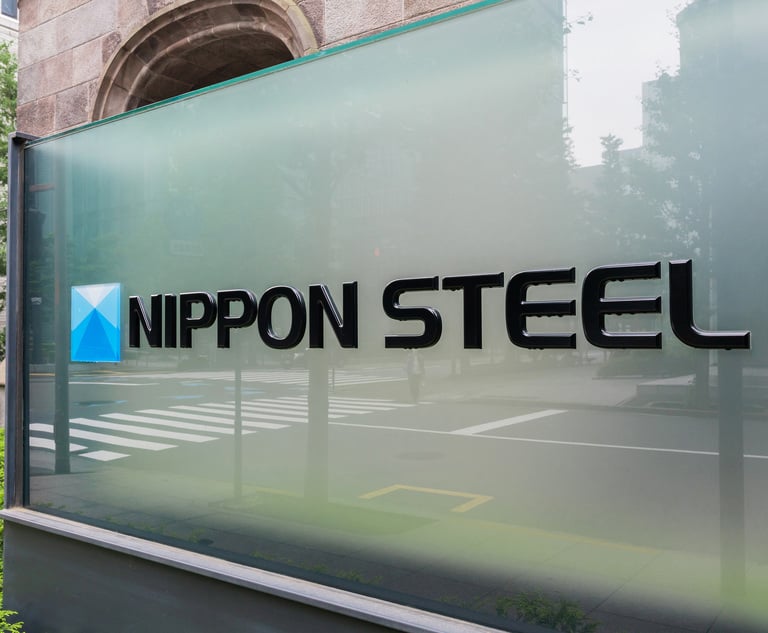A serious man - the Bar makes a real attempt to modernise
It's far too easy to ridicule the Bar's attempts at modernisation, but I usually don't let that stop me. So it's personally disappointing that the Bar Council, under Nicholas Green QC, has moved to ditch the cosmetic attempts at flogging Brand Bar in favour of something far more substantive. The focal point of this was the blueprint Green unveiled in June in a wide-ranging report, The Future of the Bar. Don't let the title put you off - the 85-page report lives up to it in scope and ambition. The vision Green puts forward is relatively simple. The publicly-funded branch of the Bar is set to contract, alternative business models are needed to complement (but not replace) chambers and barristers must be ready to hugely expand their efforts to advise clients directly.
November 23, 2010 at 02:20 AM
3 minute read
It's far too easy to ridicule the Bar's attempts at modernisation, but I usually don't let that stop me. So it's personally disappointing that the Bar Council, under Nicholas Green QC, has moved to ditch the cosmetic attempts at flogging Brand Bar in favour of something far more substantive.
The focal point of this was the blueprint Green unveiled in June in a wide-ranging report, The Future of the Bar. Don't let the title put you off – the 85-page report lives up to it in scope and ambition.
The vision Green puts forward is relatively simple. The publicly-funded branch of the Bar is set to contract, alternative business models are needed to complement (but not replace) chambers and barristers must be ready to hugely expand their efforts to advise clients directly.
To go about this, the Bar has created two models: ProcureCo and SupplyCo. The former allows chambers to act as a flexible middleman that can distribute work among barristers and to solicitor firms. The latter, which is awaiting regulatory approval, is a more radical attempt to create a vehicle that would allow chambers to achieve many of the benefits of a law firm without sacrificing the advantages of self-employed status.
There is much to commend in this blueprint, which was designed to address the market failure that threatens to occur at the publicly-funded Bar. The Bar Council hopes that the commercial Bar can also be persuaded to see the opportunities apparent when the Legal Services Act comes into full effect.
Yet, as this week's in depth feature makes clear, there will be considerable challenges before this vision can be realised. For one, it's hard to take seriously the mock horror the Bar still exhibits over anything that could be termed 'fusion'. Will fusion as barristers mean it happens in the coming decades? Probably not, but the lines between the two sides of the profession will further blur – and they should. The Bar is built on world-class advocacy, not the ethical supremacy or unquestioned glory of the chambers model.
Another issue is whether the Bar can bridge the widening gulf between its differing branches. The experience of solicitors in the 1990s does not bode well. That was the point when high street, criminal and commercial firms found that they not only had very little in common but largely didn't like each other's company. The divided state of the Law Society back then contributed to this, which unquestionably damaged the profession. It will be up to the Bar Council to do a lot better.
It will also be tough to overcome the complacency displayed by sections of the commercial Bar, which at times seems not to realise the huge consequences it will face if the publicly-funded side of the profession implodes. But Green and his colleagues have made a very credible attempt to grapple with such major challenges.
For more, see:
This content has been archived. It is available through our partners, LexisNexis® and Bloomberg Law.
To view this content, please continue to their sites.
Not a Lexis Subscriber?
Subscribe Now
Not a Bloomberg Law Subscriber?
Subscribe Now
NOT FOR REPRINT
© 2025 ALM Global, LLC, All Rights Reserved. Request academic re-use from www.copyright.com. All other uses, submit a request to [email protected]. For more information visit Asset & Logo Licensing.
You Might Like
View All
Milbank, Wachtell, Ropes and Pittsburgh Duo Aim to Save Nippon Steel's US Steel Merger


Aviation Attorney and Pilot Analyzes Jeju Air Crash, Potential Litigation Issues
Trending Stories
Who Got The Work
Michael G. Bongiorno, Andrew Scott Dulberg and Elizabeth E. Driscoll from Wilmer Cutler Pickering Hale and Dorr have stepped in to represent Symbotic Inc., an A.I.-enabled technology platform that focuses on increasing supply chain efficiency, and other defendants in a pending shareholder derivative lawsuit. The case, filed Oct. 2 in Massachusetts District Court by the Brown Law Firm on behalf of Stephen Austen, accuses certain officers and directors of misleading investors in regard to Symbotic's potential for margin growth by failing to disclose that the company was not equipped to timely deploy its systems or manage expenses through project delays. The case, assigned to U.S. District Judge Nathaniel M. Gorton, is 1:24-cv-12522, Austen v. Cohen et al.
Who Got The Work
Edmund Polubinski and Marie Killmond of Davis Polk & Wardwell have entered appearances for data platform software development company MongoDB and other defendants in a pending shareholder derivative lawsuit. The action, filed Oct. 7 in New York Southern District Court by the Brown Law Firm, accuses the company's directors and/or officers of falsely expressing confidence in the company’s restructuring of its sales incentive plan and downplaying the severity of decreases in its upfront commitments. The case is 1:24-cv-07594, Roy v. Ittycheria et al.
Who Got The Work
Amy O. Bruchs and Kurt F. Ellison of Michael Best & Friedrich have entered appearances for Epic Systems Corp. in a pending employment discrimination lawsuit. The suit was filed Sept. 7 in Wisconsin Western District Court by Levine Eisberner LLC and Siri & Glimstad on behalf of a project manager who claims that he was wrongfully terminated after applying for a religious exemption to the defendant's COVID-19 vaccine mandate. The case, assigned to U.S. Magistrate Judge Anita Marie Boor, is 3:24-cv-00630, Secker, Nathan v. Epic Systems Corporation.
Who Got The Work
David X. Sullivan, Thomas J. Finn and Gregory A. Hall from McCarter & English have entered appearances for Sunrun Installation Services in a pending civil rights lawsuit. The complaint was filed Sept. 4 in Connecticut District Court by attorney Robert M. Berke on behalf of former employee George Edward Steins, who was arrested and charged with employing an unregistered home improvement salesperson. The complaint alleges that had Sunrun informed the Connecticut Department of Consumer Protection that the plaintiff's employment had ended in 2017 and that he no longer held Sunrun's home improvement contractor license, he would not have been hit with charges, which were dismissed in May 2024. The case, assigned to U.S. District Judge Jeffrey A. Meyer, is 3:24-cv-01423, Steins v. Sunrun, Inc. et al.
Who Got The Work
Greenberg Traurig shareholder Joshua L. Raskin has entered an appearance for boohoo.com UK Ltd. in a pending patent infringement lawsuit. The suit, filed Sept. 3 in Texas Eastern District Court by Rozier Hardt McDonough on behalf of Alto Dynamics, asserts five patents related to an online shopping platform. The case, assigned to U.S. District Judge Rodney Gilstrap, is 2:24-cv-00719, Alto Dynamics, LLC v. boohoo.com UK Limited.
Featured Firms
Law Offices of Gary Martin Hays & Associates, P.C.
(470) 294-1674
Law Offices of Mark E. Salomone
(857) 444-6468
Smith & Hassler
(713) 739-1250








